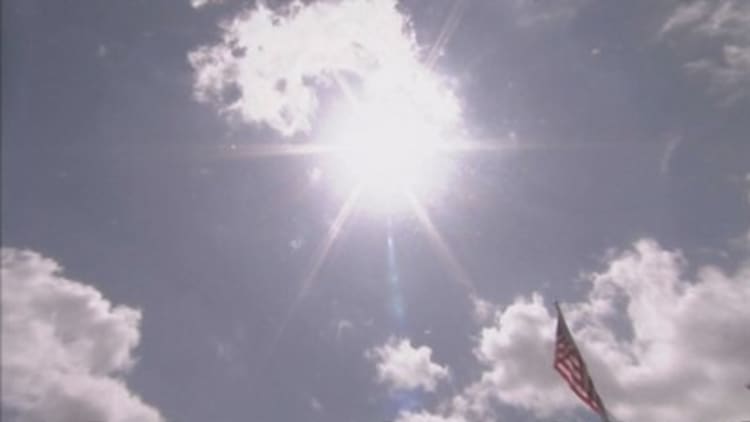
A new satellite is being launched next month which will help U.S. weather forecasters make their first big technological leap forward since the 1970's.
The joint venture between NASA and the National Oceanic and Atmospheric Administration (NOAA) will eventually launch four new weather satellites that will cover the western hemisphere.
NASA is currently preparing the launch pad at Cape Canaveral to send the first satellite, known as GOES-R, into orbit on November 16 at 4:42 p.m. ET.
According to NOAA, the new weather station will contribute to more accurate weather forecasts and better predictions of severe storms.
"Without a doubt, GOES-R will revolutionize weather forecasting as we know it," Stephen Volz, assistant administrator for NOAA's Satellite and Information Service, told reporters earlier this month.
"For weather forecasters, GOES-R is like going from black and white television to super-high-definition TV, and for the American public GOES-R will mean faster, more accurate weather forecasting and warning."
The team behind the new satellite claimed GOES-R would be able to gather data and imagery in near-real time, relaying information back to earth five times faster than current speeds.
They also said the resolution of image would be in color and four times clearer, rather than the grainy black and white imagery that forecasters presently work with.
The satellite will also be loaded with a new piece of technology known as the "Geostationary Lightning Mapper" which can track when lightning is gathering in clouds, ahead of when it strikes the ground.
NOAA said increased lightning activity may be a sign that tornados are forming, allowing emergency services more time to prepare and if necessary evacuate at-risk areas.
Lockheed Martin won the $1.09 billion contract to build the first satellite and will now build the three remaining weather stations, extending the life time of the program to 2036.


